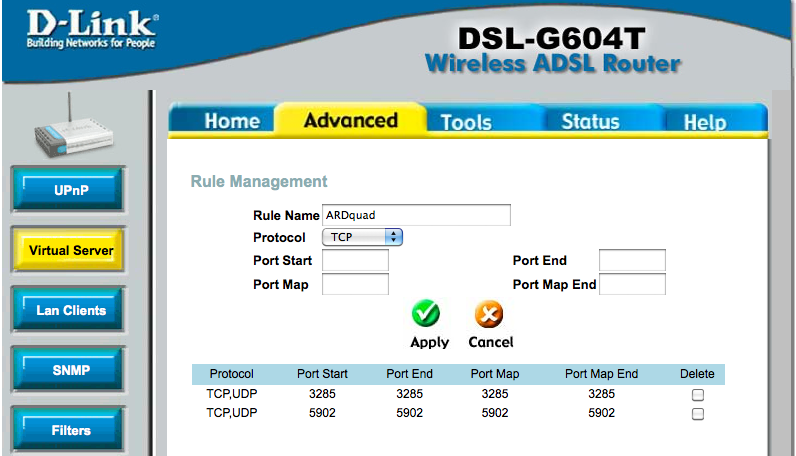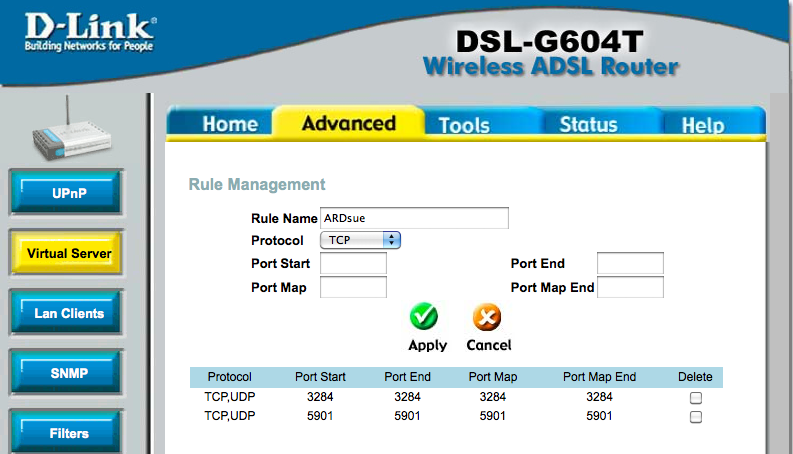Hi again guys,
Not being a true tecchie - I'm still struggling with a problem I had a year ago. ANd I guess a little bit of knowledge is dangerous - and that's me!
So I'm revisiting this same issue, and am having problems as before - I didn't actually manage to get it working, and found another solution), so I thought I'd continue the problem in the same post - hope that's OK?
Situation is:
- I have 2 computers at home, and need to access them when I'm away.
- Mac 1 is an i7 iMac running 10.6.8
- Mac 2 is an older 17" MBP (circa 2003 - still going strong) with 10.5.8
- Both have ARD client installed.
- I'm using www.no-ip.com as my dynamic DNS hosting company, as a static IP isn't going to be an option at this time - and both had No-iP's DUC daemon running which accesse their individual hostname (though they still seem to have the same external IP ? Is that correct?)
Problem:
I've been able to connect to one of the two (usually the one with the lowest numerical internal IP address - ie: 10.1.1.27 as opposed to 10.1.1.28), but not to each one individually when forwarding ports 3283 and 5900
So after a bit of reading around, I've setup my Router, to forward to 2 computers in the same home office with slightly different port numbers:
I set the Macs up as follows:
iMac (Computer #1)
Internal IP address set manually to: 10.1.1.27
MBP17" (Computer #2):
Internal IP address set manually to: 10.1.1.28
Next I went to my router (D-Link DSL G-604T), and set port forwarding to:
10.1.1.27 - TCP/UDP to 3284 and also 5901
10.1.1.28 - TCP/UDP to 3285 and also 5902


So hopefully that's all correct?
Both machines have ARD client installed on them, and I have remote accessed them individually previously, so I'm pretty sure ARD is OK on them.
Next, I saved and rebooted the G-604T and ensured the config had saved - it had.
Now I went to my "Work_MBP" - this is the machine I'll use when I'm away, to access the Mac's at home & opened ARD (from inside the same network), and tried to view either of the machines via my internal network, to see if I could get access - nothing.
In ARD, I tried both the local IP address: 10.1.1.27:3284 and the No-iP address - myusername.no-ip.org:3284
So possibly I'm only able to access this from outside of my local network, but I'm suspecting that I need to tell each of the "home" macs, that they now need to use a different port for screen sharing, for this to work.
I'm thinking that each is set to screen share on 3283 (as the default port), but now I'm saying - forget that, we'll use 3284 - so neither is seeing the router forwarding to it? So I'm guessing I may need to be re-assigning the screen sharing port on each home machine? But if that's the case, I've no idea how to do that!
How close am I?
Maybe I'm totally off base with this, but some help or guidance would be GREATLY appreciated as I'm away again next week, and this is becoming a pain!
Thanks for any input guys.